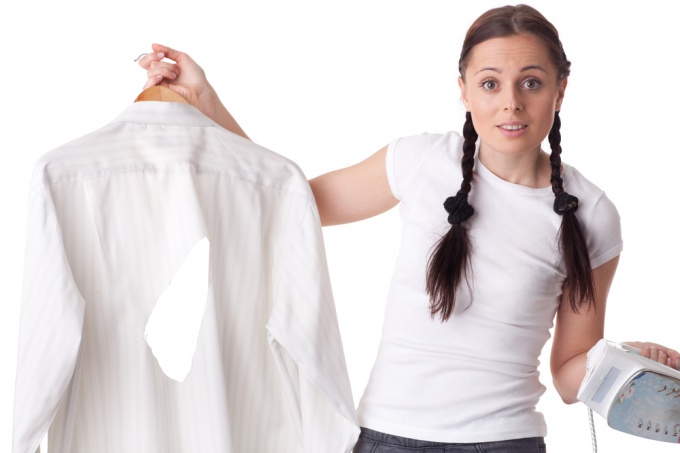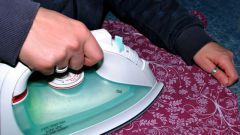First, it is better to iron a shirt in a particular sequence: start with the collar, the yoke, and then proceed to the cuffs, sleeves, and only at the end of the Ironing bar, shelves and back.
Collar iron from the corners to the middle with the wrong side, turn it over on the front side and do the same thing. It is not necessary to bend the collar through the small stands and ironed the crease, it turns out very ugly. Then ironed the yoke.
To iron the long sleeves begin with the cuffs. Like collar, cuffs, first ironed on the reverse side, and then from the front. If you use the stand for Ironing sleeves, you can just pull on her sleeve and iron in a circle. Repeat the same with the second sleeve. If you stroke the classical way, fold the sleeves at the seam and outwrite from seam to the edge with the top down. Make sure that edge didn't stick bends.
The main part of the shirt can be ironed in different ways. First method: ironed separately right shelf, which with a button on the back left shelf and right at the end of the bar. Second method: lay the shirt on the narrow part of the Ironing Board, smooth it round.
Secondly, linen and cotton shirts should be ironed while they are still slightly damp. If the shirt is dry, it is recommended to either sprinkle it with water from a spray bottle, or wrap it for a few minutes in a damp towel. As for the silk shirts, they should be well dried and ironed through a damp thin fabric, but not the gauze, as after it can be prints. On shirt, faux-silk not to splash water spots may remain.
Third, in order not to burn the shirt, choose the mode of Ironing depending on the type of tissue. For example, a cotton shirt is ironed at a temperature of 150 degrees using wet steam.
And fourth, men's shirts made to stroke from the front side. On the reverse side need to iron a shirt only dark colors, so it left white streaks from the iron, and a shirt of shiny fabrics, so they are not faded.
How to iron a shirt
Not every modern woman knows how to iron a mens shirt properly. In fact, it is not difficult! In order to learn how to iron men's shirts quickly and without any folds, you need to remember a few simple rules.

Is the advice useful?


